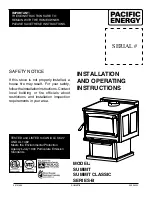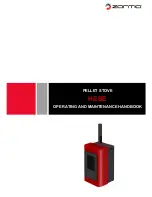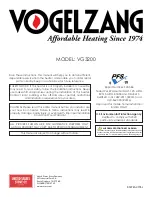
Fireplace
Insert
Installation
(for qualified installers only)
21
© Travis Industries
100-01332
4121214
Zero-Clearance (Metal) Fireplace Requirements
Must utilize a positive (full reline) or direct connection (block-off plate)
Must be manufactured by one of the following manufacturers:
• Marco • Majestic • Heatilator • Preway • Tempco • Superior
• Heat N Glo • Lennox • Martin • Monesson
Entire fireplace, including chimney, must be clean and undamaged. Any damage must be repaired
prior to installation of the insert
Entire fireplace, including chimney, must meet local building requirements
Chimney height: 15' minimum; 33' maximum. Minimum cross section: 28.65 square inches
The
damper
("
A
") and grate ("
B
") must be removed (see Figure 18). The smoke shelf ("
C
"), internal
baffles ("
D
"), screen ("
E
"), and metal or glass doors ("
F
") may be removed (if applicable). The
masonry lining ("
G
"), insulation ("
H
"), and any structured rigid frame members (metal sides, floor, door
frame, face of the fireplace, etc. – "
I
") may not be removed or altered
Figure 18
Drafting Performance
This appliance relies upon natural draft to operate. External forces, such as wind, barometric pressure,
topography, or factors of the home (negative pressure from exhaust fans, chimneys, air infiltration, etc.),
may adversely affect draft. Travis Industries can not be responsible for external forces leading to less
than optimal performance.
Leveling Bolt Installation
Two leveling bolts are included to level the insert if the fireplace has a stepped-up hearth. To install, raise
the rear of the insert and insert the leveling bolts into the holes in the rear corners of the insert. Adjust the
bolts until they extend the same height as the hearth (see Figure 19). After the insert is installed, fine-
tune the leveling bolts to level the insert.
Figure 19
C
B
F
I
D
E
A
G
H
Fireplace
















































